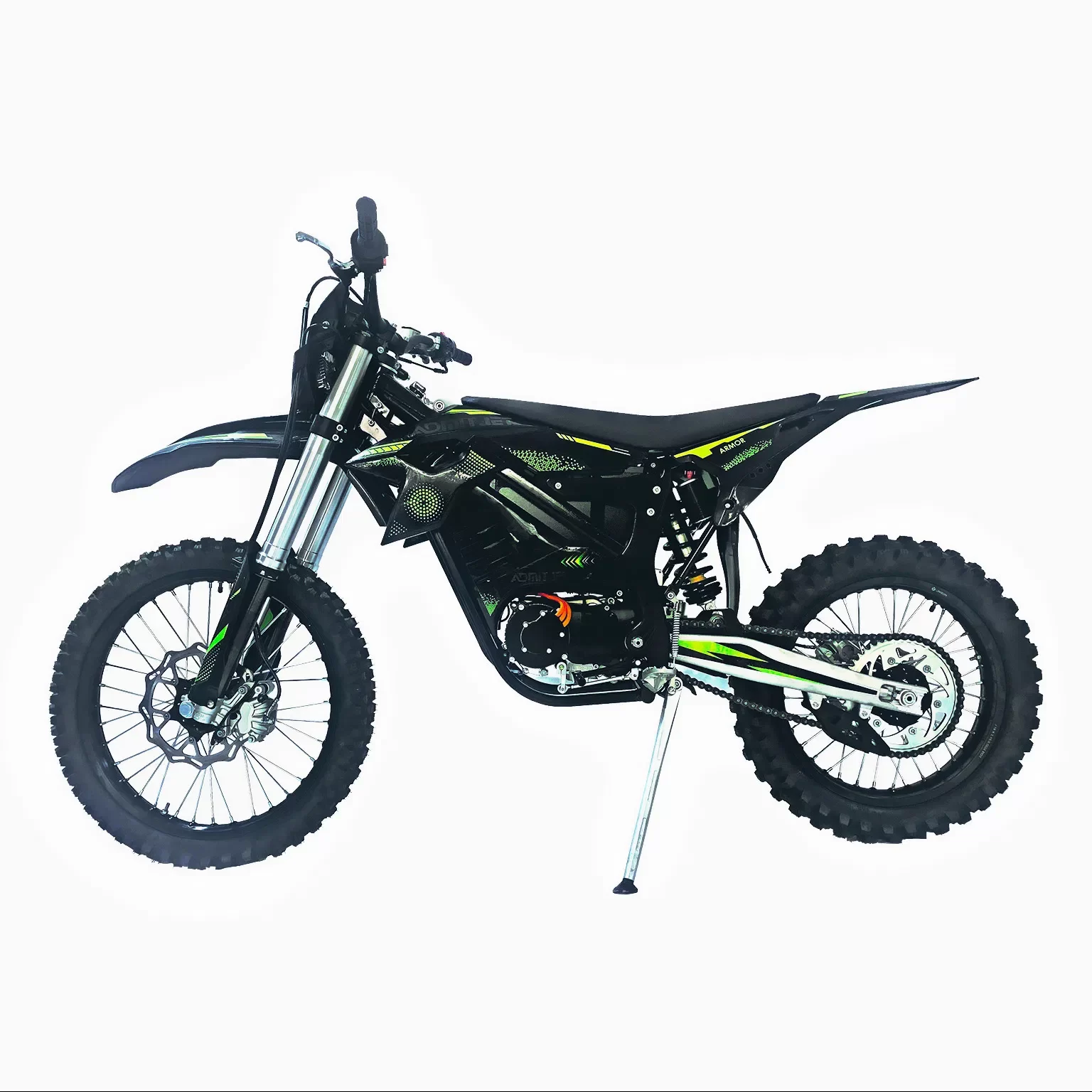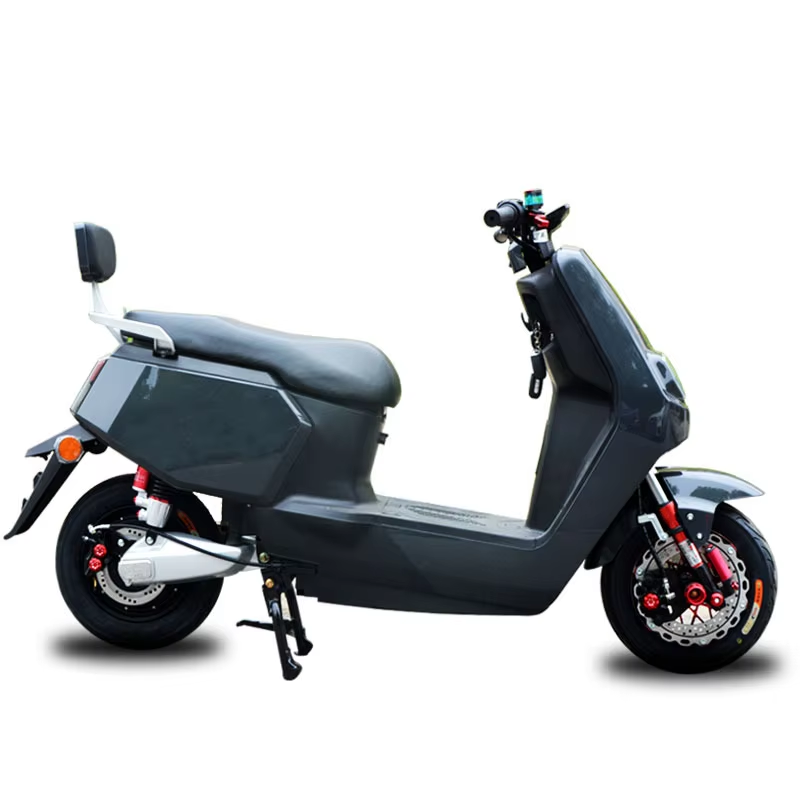The Concept of Electric Motorcycle Conversion
Electric motorcycle conversion transforms a petrol-powered bike into an eco-friendly electric vehicle (EV). This process involves replacing the internal combustion engine with an electric motor and adding a battery pack as the power source. Conversions are popular among enthusiasts and DIYers seeking a custom EV experience or reducing their carbon footprint.

Enthusiasts often choose to convert motorcycles to electric for a variety of reasons:
- Environmental Impact: Electric conversions help reduce emissions, offering a cleaner alternative to fossil fuels.
- Cost-Efficiency: Over time, electric vehicles tend to be cheaper to operate due to lower fuel and maintenance costs.
- Performance: Electric motors can provide instant torque, potentially improving acceleration and ride quality.
- Customization: Conversions allow riders to create a unique bike tailored to their preferences.
- Interest in Technology: Many are drawn to the challenge and innovation involved in building an electric motorcycle.
The process typically starts with extensive planning and gathering of necessary components such as a suitable motor, battery pack, controller, throttle mechanism, and various gauges and switches. It also involves significant electrical work and, in some cases, mechanical modifications to the motorcycle frame to accommodate the new components.
While the conversion can be resource-intensive, both in terms of time and money, the end product is often a source of pride and a testament to the builder’s ingenuity. It’s a journey into the future of transportation, where every converted motorcycle is a step towards a more sustainable world.
Choosing the Right Motorcycle for Conversion
Selecting an appropriate motorcycle as the foundation for an electric conversion is crucial.
Factors to Consider When Selecting a Donor Bike
When deciding on a motorcycle to convert to electric, consider the following:
- Availability: Look for models that are commonly available, as this makes finding parts easier.
- Condition: Choose a motorcycle with a solid frame and working parts, except for the engine.
- Type of Motorcycle: Start with a lighter bike for an easier conversion process and better performance.
- Space for Components: Ensure there is enough room to house the electric motor and batteries.
- Ease of Conversion: Some bikes have simpler designs that make conversion more straightforward.
Starting with the Right Base Bike
A good base bike is essential for a successful electric conversion. Examples include older motorcycles with ample space in the frame, like certain Honda or Kawasaki models, where the gas engine used to be.
Sourcing a Motorcycle
To source a motorcycle, check local listings, online marketplaces like eBay or Craigslist, and auctions. Remember, the engine condition is not a concern, so bikes with non-functioning engines may be more affordable and just as suitable for conversion.
By carefully selecting the right motorcycle, you set a robust foundation for an efficient and effective electric conversion. The next step involves choosing the components that will bring your electric motorcycle to life.
Essential Components for Electric Conversion
Choosing the right components is crucial for a successful electric motorcycle conversion. These components will replace the traditional gasoline engine and allow your motorcycle to operate efficiently on electric power.
Motor and Controller
The heart of an electric motorcycle is the motor and the controller. The motor provides the necessary power to drive the bike, while the controller manages this power. When selecting a motor, ensure it fits your bike and meets your power needs. A popular choice is a Brushed 48v motor for its balance of power, cost, and availability. The controller should be compatible with your motor type and capable of handling the voltages and currents your setup requires.
Batteries and Management Systems
Batteries are another vital component, acting as the fuel tank in your electric conversion. You will need a battery pack with enough capacity to meet your desired range. Deep cycle batteries are common, but lighter options can be advantageous for performance. Alongside the batteries, a Battery Management System (BMS) is essential to monitor the battery’s health and ensure safe charging and discharging.
Throttle, Gauges, and Switches
Finally, the conversion requires replacing the throttle system to an electric variant, such as the Magura Twist grip, which effectively translates twist-grip action into electronic signals to control speed. Gauges for monitoring battery level and speed, and switches like a high-current contactor for power management, are integral to operating your electric motorcycle safely and effectively.
Steps in Converting Your Motorcycle
Initial Planning and Design
When you decide to convert motorcycle to electric, start with a clear plan. Consider your needs for speed, range, and budget. Use resources like Electric Motorcycle Conversions for insights and inspiration. Collect images and specs of successful conversions. This preps you for a smoother build process.
Frame Modifications and Adjustments
Next, ready your bike for its new electric heart. Remove the gas engine and related parts. Prepare for potential rust treatment or painting. Ensure your frame can support the weight and size of electric components. Seek advice on forums like Endless Sphere if needed.
Electrical Installation and Setup
Now, install the motor to the frame. Use existing mounts or create new ones. Place the batteries low and center for balance. Wire them in series for the right voltage. Set up the controller carefully for effective power regulation. Test connections with a multimeter. After securing the motor, controller, and batteries, add the new throttle mechanism. Ensure your electrical system is safe and functional.
Remember to share your conversion journey with others. You can learn from their feedback and experiences on online platforms like DIY Electric Vehicle.
 Common Challenges and Solutions
Common Challenges and Solutions
Navigating the terrain of converting a motorcycle to electric isn’t without its hiccups. Let’s discuss common issues builders face and their solutions.
Technical Difficulties and Troubleshooting
Converting a motorcycle to electric can pose various technical challenges. You might face issues with component compatibility, wiring errors, or motor installations. To tackle these, first ensure you understand your components’ requirements and have detailed instruction manuals on hand. Engaging with online communities or forums, like Endless Sphere, can also provide valuable assistance. A methodical approach to testing each component, using tools such as a multimeter, can help identify and resolve electrical problems.
When troubleshooting, start with basic checks: ensure all connections are secure, the battery is fully charged, and the fuses are not blown. Keep a systematic log of steps taken so you can backtrack if needed. Patience and attention to detail are paramount here.
Legal and Safety Considerations
Safety is critical when converting motorcycles to electric. Research and comply with regulations related to electric vehicles in your area. These might include requirements for inspections, registration, and insurance changes. Always use components rated for their intended use and consider incorporating features like emergency disconnects for added security.
Legal compliance ensures that your newly converted electric motorcycle is roadworthy and protected under traffic laws. Hence, familiarize yourself with the Department of Motor Vehicles (DMV) procedures for EVs, as these may differ from standard motorcycles.
When planning your conversion, carefully administer these aspects by leveraging experience from successful conversions, adhering to recommendations in safety manuals, and accessing the wealth of community-driven knowledge available online.
Cost Analysis and Budget Planning
Embarking on an electric motorcycle conversion involves a clear understanding of costs. It’s not just the initial outlay, but also the long-term financial implications.
Cost of Parts and Labor
Calculating the cost of parts starts with a list: motor, batteries, controller, throttle, and various smaller parts. Market research helps estimate these expenses, which can vary widely. Labor costs depend on whether you do the work or hire an expert.
- Motor and Controller: Expect to spend on a reliable motor and a compatible controller.
- Batteries: The major cost driver in the project, with prices depending on capacity and type.
- Additional Components: Include a throttle, switches, and a BMS in your budget.
- Labor: If you’re not a DIYer, professional installation will add to the cost.
Remember, while refurbished or used parts can save money, reliability can be a trade-off. Keep track of all expenses to avoid budget overruns.
Long-Term Savings and Benefits
After the initial investment, the cost to convert motorcycle to electric pays off over time. Savings on fuel, traditional maintenance, and some tax incentives reduce the total cost of ownership.
- Fuel Savings: Electric power is cheaper than gasoline per mile.
- Maintenance: Electric motorcycles have fewer moving parts, leading to lower maintenance costs.
- Clean Energy Incentives: Some regions offer benefits for using renewable energy sources, like tax rebates.
Converting to electric is not just cost-effective but also environmentally responsible, aligning with global sustainability goals. To clearly assess the financial aspect, consider the upfront costs against the long-term savings.
 Comparisons and Case Studies
Comparisons and Case Studies
Review of Successful Motorcycle Conversions
Exploring successful electric motorcycle conversions offers valuable insights. Joe Murphy converted a classic motorcycle to electric, drastically reducing pollution. His project outcomes included a cost of $1,000, a range of 40 miles, and a top speed of 40 mph with a specific sprocket setup. The bike weighed roughly 320 pounds, minimally heavier than its original form. Notably, his recharge cost was less than a penny per mile. This conversion underlines the economic and environmental benefits of switching to electric motorcycles. Articles and forums like Instructables and Electric Motorcycle Blog possess a wealth of detailed guides and personal conversion stories, which are helpful for new converters.
Lessons Learned and Best Practices
Several best practices emerge from reviewing multiple case studies:
- Planning is Crucial: Knowing the desired range, speed, and budget guides the project effectively.
- Component Quality Matters: Invest in reliable motors, batteries, and controllers to ensure longevity and performance.
- Space Optimization: Efficient utilization of space for batteries and motor affects the bike’s balance and handling.
- Trial and Error: Murphy’s project revealed the importance of flexibility and learning from mistakes. Do not shy away from making necessary adjustments during the project.
By incorporating these lessons, builders enhance their chances of a successful and satisfying electric motorcycle conversion.
